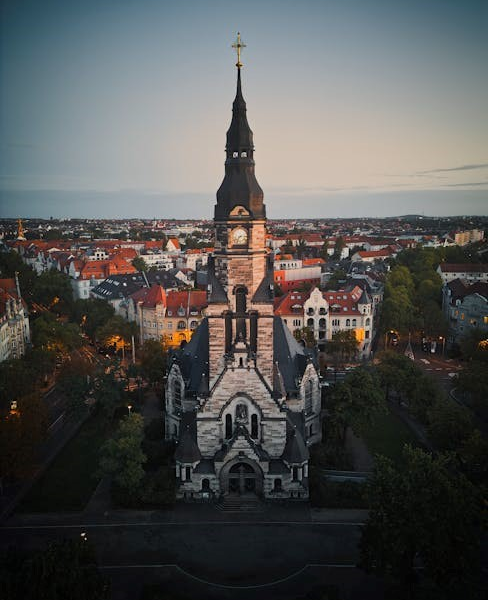Guido Reni, a prominent 17th-century Italian painter, is celebrated for his Baroque masterpieces; His work, such as St. Michael, exemplifies his refined style, blending elegance and dramatic intensity.
1.1. Biography of Guido Reni
Guido Reni was born in 1575 in Bologna, Italy, and trained under Denys Calvaert. He became a prominent Baroque painter, known for his harmonious compositions and emotional depth. Reni’s career flourished in Rome, where he gained acclaim for his altarpieces. Despite personal struggles, including gambling, his artistic legacy endured, making him a central figure in 17th-century Italian art.
1.2. Reni’s Role in Baroque Art
Guido Reni was a pivotal figure in the Baroque movement, known for his elegant and harmonious style. His works, such as St. Michael, showcased dramatic lighting and emotional depth, influencing later artists. Reni’s refined approach contrasted with the intense realism of Caravaggio, offering a more classical interpretation of Baroque themes. His art bridged the gap between Renaissance ideals and Baroque dynamism, leaving a lasting impact on European art.
The Painting “St. Michael” by Guido Reni
Created in the 17th century, Reni’s St. Michael is a captivating oil on canvas depicting the archangel defeating Satan. Its dynamic style and vivid colors reflect Reni’s mastery of Baroque art, blending religious themes with artistic excellence.
2.1. Title and Date of the Painting
Guido Reni’s masterpiece is titled St. Michael, also referred to as The Archangel Michael Trampling Satan. Created in the early 17th century, this oil on canvas painting captures a pivotal moment in religious art, showcasing Reni’s technical prowess during his most productive period.
2.2. Artistic Style and Composition
Guido Reni’s St. Michael embodies the Baroque style with dynamic composition and dramatic lighting. The painting features vivid contrasts of light and shadow, enhancing the emotional intensity. Reni’s use of vibrant colors and precise anatomical details creates a striking visual narrative, capturing the archangel’s triumph over evil with elegance and power.
2.3. Historical Context of the Painting
St. Michael was created during the 17th century, a time of religious and cultural transformation in Europe. The Catholic Church, seeking to reaffirm its influence, commissioned artworks that emphasized divine triumph over evil. Reni’s painting reflects this context, depicting the archangel’s victory as a powerful symbol of faith and moral struggle, resonating with the Counter-Reformation’s themes of redemption and spiritual renewal.

The Artistic Elements of “St. Michael”
The painting showcases Reni’s mastery of color and light, with vibrant hues and dramatic contrasts. Its dynamic composition and emotional intensity capture the essence of Baroque artistry.
3.1. Use of Color and Light
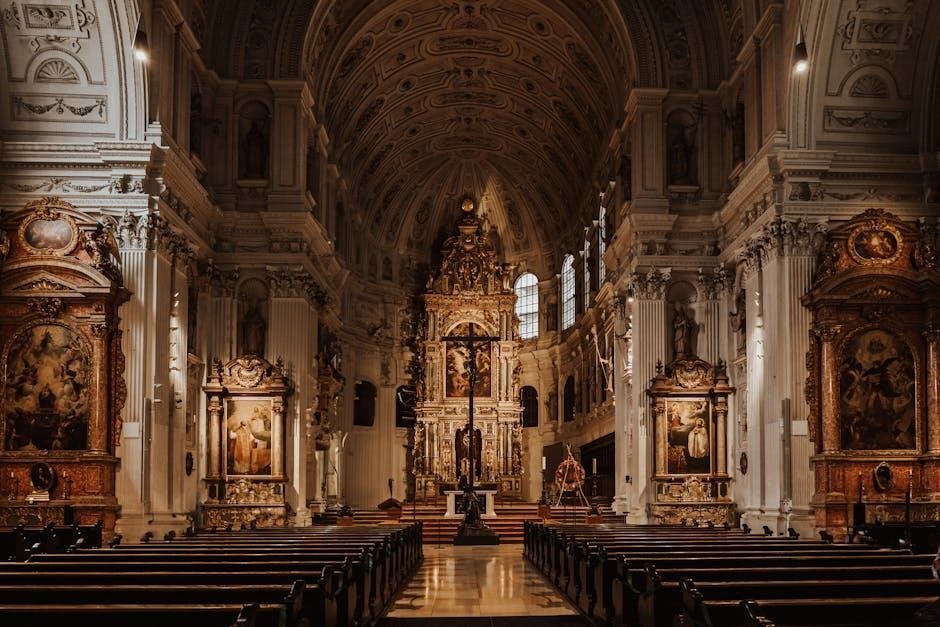
Guido Reni’s St. Michael features a striking use of color and light, with vivid hues and dramatic contrasts enhancing the painting’s emotional depth. The interplay of light and shadow creates a dynamic effect, while the warm tones evoke a sense of divine energy, emphasizing the archangel’s celestial nature and the battle’s spiritual significance.
3.2. Symbolism in the Painting
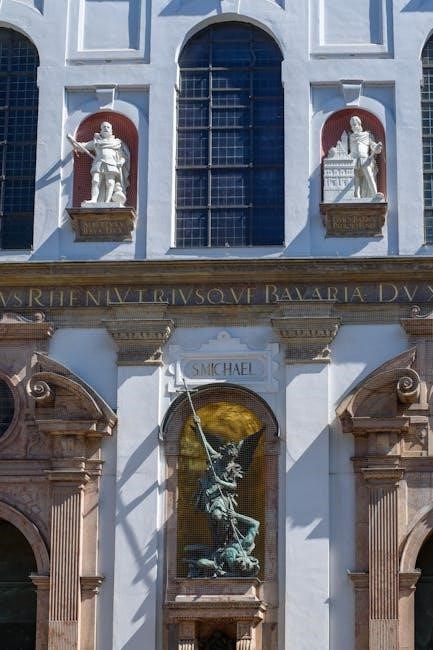
In St. Michael, Guido Reni employs rich symbolism. The archangel represents divine justice, while Satan embodies evil. The scales symbolize judgment, and the vibrant colors signify the triumph of light over darkness. These elements collectively convey a powerful narrative of moral struggle and divine victory, resonating deeply with the religious ethos of the Baroque era.
3.3. The Depiction of the Archangel Michael
Guido Reni’s St. Michael portrays the archangel with serene yet powerful majesty. Clad in gleaming armor, Michael stands triumphantly over Satan, his expression steadfast. The artist captures Michael’s divine authority through idealized features and dynamic poses, emphasizing his role as a celestial warrior and protector, in harmony with Baroque ideals of grandeur and emotional depth;
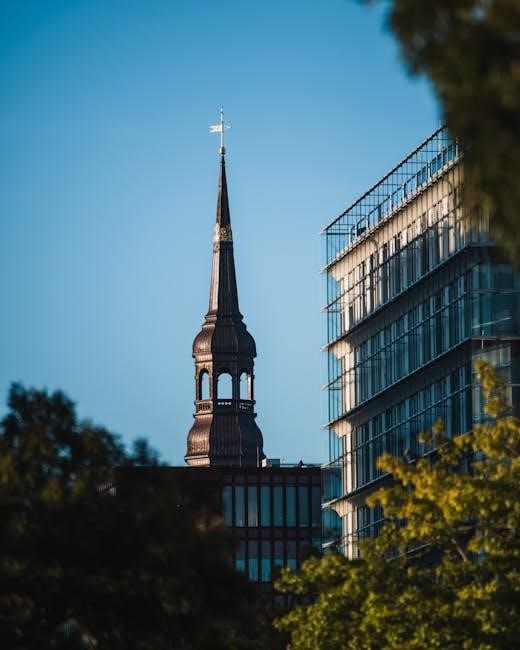
The Legacy of “St. Michael” in Art History
Guido Reni’s St. Michael remains a cornerstone of Baroque art, inspiring later artists with its dramatic composition and emotional depth, while symbolizing cultural and religious ideals.
4.1. Influence on Later Artists
Guido Reni’s St. Michael significantly influenced later artists by setting a standard for dynamic religious art. Its balance of emotion and elegance inspired 18th-century painters, fostering a legacy of dramatic yet refined compositions that continue to be studied and admired in art history.
4.2. Cultural and Religious Impact
Guido Reni’s St. Michael holds profound cultural and religious significance, embodying the Baroque era’s spiritual intensity. Its vivid depiction of the archangel’s triumph over evil resonated deeply with 17th-century audiences, reinforcing Catholic ideals during a period of religious turmoil. The painting’s emotional power and symbolic depth continue to inspire devotion and artistic admiration across cultures and centuries.
4.3. Conservation and Preservation Efforts
The Getty Conservation Institute has played a pivotal role in preserving Guido Reni’s St. Michael. Advanced techniques, including scientific analysis and careful restoration, ensure the painting’s integrity. These efforts safeguard its cultural heritage, maintaining its vivid colors and intricate details for future generations to appreciate and study.
Comparisons with Other Works by Reni
Guido Reni’s St. Michael reflects his consistent use of vibrant colors and dynamic compositions, similar to his other religious works, showcasing his artistic evolution and thematic coherence.
5.1. Similar Themes in Reni’s Oeuvre
Guido Reni frequently explored religious and mythological themes, as seen in St. Michael and other works like Aurora and The Martyrdom of Saint Sebastian. His art often features luminous colors, harmonious compositions, and a focus on divine and heroic subjects, reflecting his mastery of Baroque drama and elegance while maintaining a consistent thematic thread throughout his career.
5.2. Stylistic Differences and Evolution
Guido Reni’s artistic style evolved from intense Baroque drama to a more refined elegance. Early works, like St. Michael, showcased dramatic chiaroscuro and emotional intensity. Over time, Reni adopted softer colors and balanced compositions, reflecting a shift toward classical serenity. This evolution highlighted his technical mastery and adaptability, blending dramatic elements with harmonious grace, as seen in his later works.
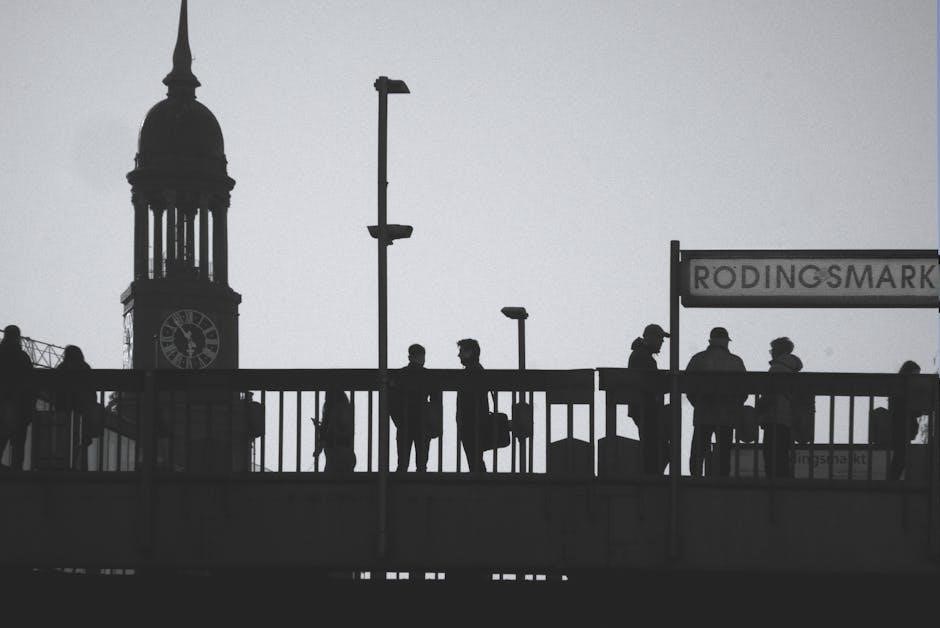
The Painting’s Reception and Interpretation
Guido Reni’s St. Michael captivated contemporary audiences with its vivid colors and dramatic light. Modern interpretations highlight its symbolic depth, reflecting themes of divine triumph and moral struggle.

6.1. Contemporary Reviews and Criticism
Guido Reni’s St. Michael received acclaim in its time for its dynamic composition and emotional intensity. Critics praised the vivid use of color and light, noting how it elevated the painting’s religious themes; The artwork was seen as a quintessential Baroque piece, capturing the dramatic tension between good and evil with masterful execution and profound spiritual resonance.
6.2. Modern Interpretations and Analysis
Modern art historians admire Reni’s St. Michael for its harmonious balance of elegance and dramatic intensity. The painting’s use of color and light continues to captivate, with scholars analyzing its symbolism and emotional depth. Its depiction of the archangel remains a powerful icon, reflecting both the cultural and religious values of its time while enduring as a masterpiece of Baroque art.
The Painting’s Place in Baroque Art
Guido Reni’s St. Michael embodies the Baroque style with its dynamic composition and dramatic use of light and shadow, typifying the era’s emphasis on emotional intensity and grandeur.
7.1. The Baroque Movement and Its Characteristics
The Baroque movement, flourishing in the 17th century, emphasized dramatic intensity, elaborate detail, and dynamic compositions. It often featured strong contrasts of light and shadow, known as chiaroscuro, and emotionally charged subjects. This style was deeply influenced by the Catholic Church’s Counter-Reformation efforts, aiming to inspire awe and devotion through art. Reni’s work perfectly encapsulates these elements.
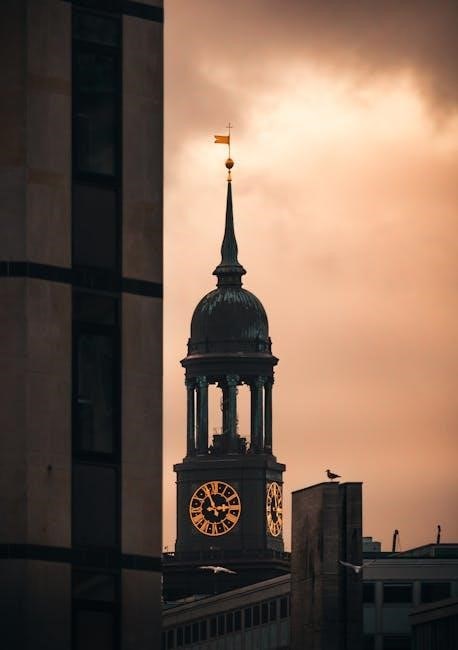
7.2. Reni’s Contribution to Baroque Art
Guido Reni significantly influenced Baroque art by harmonizing dramatic elements with classical grace. His compositions, such as St. Michael, balanced vivid emotions with refined elegance, creating a bridge between intense Baroque drama and Renaissance restraint. Reni’s work inspired later artists, shifting the focus toward more restrained yet emotionally powerful narratives within the Baroque tradition.

The Painting’s Cultural and Historical Context
Created during the 17th century, St. Michael reflects the cultural and religious fervor of the time. The painting embodies the political and spiritual tensions in Italy, influenced by the Catholic Church’s patronage and the Baroque movement’s dramatic style.
8.1. The Political and Religious Climate of the Time
During the 17th century, Italy was marked by political turmoil and religious zeal. The Catholic Church, amid the Counter-Reformation, sought to reaffirm its authority, influencing art to convey divine themes. Reni’s St. Michael reflects this climate, embodying the spiritual and political tensions of the era through its depiction of celestial conflict and triumph.
8.2. The Role of the Church in Art Patronage
The Catholic Church was a dominant patron of the arts during Reni’s time, commissioning works to inspire devotion and uphold theological doctrine. Religious orders and churches funded projects like St. Michael to visually reinforce Catholic ideology, particularly amid the Counter-Reformation. This patronage system allowed artists like Reni to thrive while aligning their creativity with the Church’s spiritual and political aims.
The Painting’s Iconography and Symbolism
St. Michael features the archangel triumphing over Satan, symbolizing divine justice. The scales and sword represent righteousness and judgment, while vibrant colors and dynamic composition enhance the Baroque drama.
9.1. The Representation of Good and Evil
Guido Reni’s St. Michael vividly depicts the archangel triumphing over Satan, embodying the eternal struggle between good and evil. The painting uses vibrant colors and dynamic composition to emphasize moral dualism, with Michael’s radiant figure symbolizing virtue and divine authority, while Satan’s dark, twisted form represents sin and defeat. The artwork captures the dramatic tension between light and darkness, reflecting Baroque emotional depth.
9.2. The Use of Religious Imagery
Guido Reni’s St. Michael employs rich religious imagery, depicting the archangel as a divine warrior. The painting symbolizes the triumph of faith over evil, with Michael’s radiant figure and outstretched sword embodying divine justice. The fallen Satan, dark and twisted, contrasts sharply with Michael’s purity, reinforcing moral and theological themes central to Catholic art of the Baroque era.
The Painting’s Provenance and Ownership History
Guido Reni’s St. Michael was created in the 17th century and has journeyed through private collections and exhibitions. It is now housed in a prominent museum, showcasing its enduring legacy and cultural significance.
10.1. The Painting’s Journey Through the Centuries
Guido Reni’s St. Michael was created in the early 17th century and initially displayed in a church. Over the centuries, it transitioned through private collections and royal ownership before being acquired by a prominent museum. Its condition remains pristine, with minor restorations preserving its original vibrancy. The painting has been exhibited worldwide, captivating audiences with its Baroque splendor and historical significance.
10.2. Notable Collectors and Exhibitions
Guido Reni’s St. Michael has been owned by notable collectors, including European aristocrats and private art enthusiasts. It has been featured in major exhibitions worldwide, showcasing its Baroque brilliance. The painting is now housed in a prominent museum, where it remains a focal point of artistic and historical admiration, attracting scholars and art lovers alike.
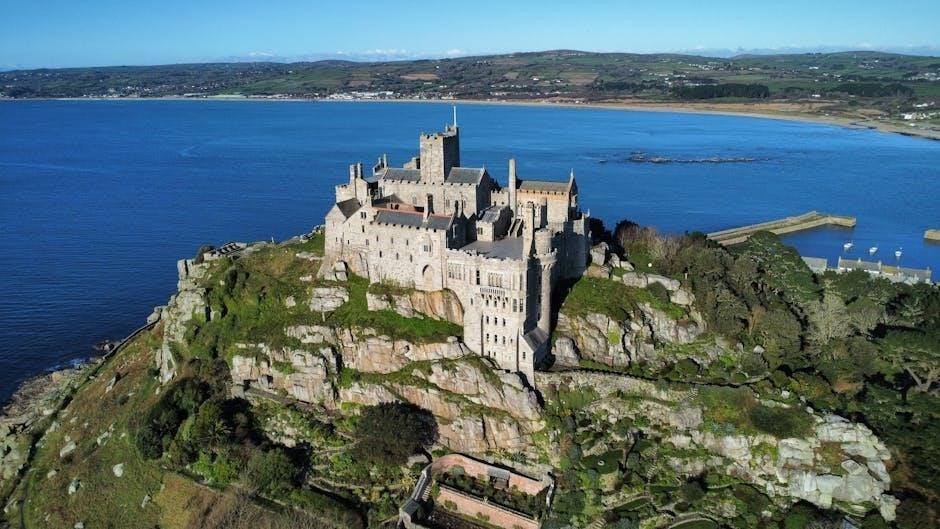
The Painting’s Influence on Literature and Music
Guido Reni’s St. Michael has inspired literary works and musical compositions, evoking themes of divine conflict and triumph. Its dramatic imagery resonates in both art forms, sparking creativity.
11.1. References in Literature
Guido Reni’s St. Michael has inspired literary works, with authors drawing from its vivid depiction of celestial conflict. The painting’s themes of divine triumph and struggle between light and darkness resonate in poetic and narrative contexts, often symbolizing moral and spiritual battles. Its imagery has been referenced in works exploring faith, heroism, and the eternal clash of good and evil.
11.2. Musical Compositions Inspired by the Painting
Guido Reni’s St. Michael has inspired musical compositions, particularly in works reflecting themes of divine triumph and conflict. Composers have drawn from the painting’s dynamic imagery, translating its emotional intensity into symphonic and choral pieces. The struggle between light and darkness is often mirrored in musical motifs, evoking a sense of heroism and spiritual victory, resonating with audiences across genres and eras.
Guido Reni’s St. Michael remains a cornerstone of Baroque art, inspiring admiration and reflection. For deeper exploration, explore museum catalogues, art history texts, and conservation studies.
12.1. Summary of the Painting’s Significance
Guido Reni’s St. Michael is a masterpiece of Baroque art, capturing the triumph of good over evil. Its dramatic composition, vibrant colors, and emotional depth reflect Reni’s artistic brilliance. The painting symbolizes divine victory and moral struggle, resonating culturally and religiously. It remains a landmark in art history, inspiring admiration and study for its technical and thematic excellence. Its legacy endures as a testament to Reni’s contributions to Baroque art.
12.2. Recommended Resources for Further Study
For deeper exploration, consider consulting art history books on Baroque painting, museum catalogues featuring Reni’s works, and academic articles on St. Michael. The Getty Conservation Institute offers insights into preservation efforts. Online platforms like Google Arts & Culture and JSTOR provide accessible resources. Visiting exhibitions and libraries with Reni’s oeuvre is also highly recommended for comprehensive understanding and appreciation.
